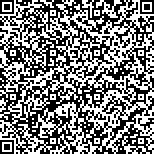| 引用本文: | 李亚梅,杨扬,杨义芳,李小锋,康兴东,肖军平,吴永忠,杨建琼.裸花紫珠抗菌作用的谱效学研究[J].中国现代应用药学,2021,38(11):1294-1301. |
| LI Yamei,YANG Yang,YANG Yifang,LI Xiaofeng,KANG Xingdong,XIAO Junping,WU Yongzhong,YANG Jianqiong.Study on the Spectrum Effect of Antibacterial Activity of Callicarpae Nudiflorae Folium[J].Chin J Mod Appl Pharm(中国现代应用药学),2021,38(11):1294-1301. |
|
| |
|
|
| 本文已被:浏览 1820次 下载 1162次 |

码上扫一扫! |
|
|
| 裸花紫珠抗菌作用的谱效学研究 |
|
李亚梅1, 杨扬2, 杨义芳2,3, 李小锋4, 康兴东4, 肖军平4, 吴永忠4, 杨建琼5
|
|
1.赣南医学院, 江西 赣州 341000;2.中国医药工业研究总院上海医药工业研究院, 上海 201203;3.上海药辰生物科技有限公司, 上海 200060;4.江西普正制药有限公司, 江西 吉安 343100;5.赣南医学院第一附属医院临床医学研究中心, 江西 赣州 341000
|
|
| 摘要: |
| 目的 通过裸花紫珠色谱峰与其抗菌作用之间的相关性分析,建立二者之间的谱效关系数学模型,揭示裸花紫珠抗菌作用的可能物质基础。方法 HPLC检测10批裸花紫珠药材及其不同提取物,建立药材及6种裸花紫珠不同提取物的指纹图谱,用相似度软件筛选提取物与裸花紫珠药材特征指纹图谱的共有峰,选取匹配数>2的峰进行谱效相关性分析。6种不同的提取物分别进行体内和体外抗菌试验。通过SPSS统计软件进行共有峰与抗菌活性的相关性研究,并通过线性回归建立数学模型。结果 共有35个共有峰其中有21个相关峰,经Pearson相关分析相关峰与体内抗菌作用之间呈正相关关系,与体外抗菌作用呈负相关关系。模型拟合精度较高,除体外大肠杆菌外相关系数R2>0.9,色谱峰1(梓醇),15(连翘脂苷B),23(异毛蕊花糖苷)和27(2’-乙酰基毛蕊花糖苷)被引入谱效相关方程,呈较强相关性。色谱峰1(梓醇),9(原儿茶酸),10(原儿茶醛),12,14(咖啡酸),16(阿魏酸),18(毛蕊花糖苷),19(木犀草苷),23(异毛蕊花糖苷),25(2’-乙酰基金石蚕苷),27(2’-乙酰基毛蕊花糖苷),28(木犀草素),29(槲皮素),30,32(芹菜素),34(异鼠李素),35(5,4’-二羟基-3,7,3’-三甲氧基黄酮)与体内外抗菌作用呈显著相关。结论 建立的谱-效关系模型能较好地评价裸花紫珠提取物色谱峰与其药理作用之间的相关关系,基本确定裸花紫珠发挥抗菌作用的成分主要为苯乙醇苷类化合物,其次为黄酮类化合物,为裸花紫珠物质基础研究奠定基础。 |
| 关键词: 裸花紫珠 指纹图谱 抗菌作用 谱效关系 |
| DOI:10.13748/j.cnki.issn1007-7693.2021.11.003 |
| 分类号:R284.1 |
| 基金项目:国家自然科学基金青年科学基金项目(81402824) |
|
| Study on the Spectrum Effect of Antibacterial Activity of Callicarpae Nudiflorae Folium |
|
LI Yamei1, YANG Yang2, YANG Yifang2,3, LI Xiaofeng4, KANG Xingdong4, XIAO Junping4, WU Yongzhong4, YANG Jianqiong5
|
|
1.Gannan Medical University, Ganzhou 341000, China;2.China State Institute of Pharmaceutical Industry Shanghai Institute of Pharmaceutical Industry, Shanghai 201203, China;3.Shanghai Yaochen Biotechnology Co., Ltd., Shanghai 200060, China;4.Jiangxi Puzheng Pharmaceutical Co., Ltd., Ji'an 343100, China;5.The Clinical Medical Research Center, The First Affiliated Hospital of Gannan Medical University, Ganzhou 341000, China
|
| Abstract: |
| OBJECTIVE To analyze the correlation between the chromatographic peaks of Callicarpae Nudiflorae Folium and its antibacterial effect, establish a mathematical model of the spectrum-effect relationship between them, and reveal the possible material basis of the antibacterial effect of Callicarpae Nudiflorae Folium. METHODS HPLC was used to detect 10 batches of medicinal herbs and different extracts of Callicarpae Nudiflorae Folium, and the fingerprints of medicinal herbs and 6 different extracts of Callicarpae Nudiflorae Folium were established. Similarity software was used to screen the fingerprints of extracts and medicinal herbs. The common peaks of the selected peaks with a matching number > 2 were used for spectral effect correlation analysis. Six different extracts were tested in vivo and in vitro. Used SPSS statistical software to study the correlation between common peak and antibacterial activity, and establish a mathematical model by linear regression. RESULTS There were a total of 35 common peaks, 21 of which were related peaks. Pearson correlation analysis showed a positive correlation between the correlation peak and the antibacterial effect in vivo, and a negative correlation between the antibacterial effect in vitro. The model fitting precision was high, the correlation coefficient R2 was >0.9 except for Escherichia coli, and the chromatographic peaks 1(catalpol), 15(forsythiaside B), 23(isoacteoside) and 27(2’-acetylacteoside) were introduced into the spectrum. Effective correlation equations were strongly correlated. Chromatographic peaks 1(catalpol), 9(protocatechuic acid), 10(protocatechuic aldehyde), 12, 14(caffeic acid), 16(ferulic acid), 18(verbasic glycosides), 19(luteolin), 23(isoacteoside), 25(2’-acetyl fund stauroside), 27(2’-acetylacteoside), 28(luteolin), 29(quercetin), 30, 32(apigenin), 34(isorhamnetin), 35(5,4’-dihydroxy-3,7,3’-trimethoxyflavone) were significantly related to antibacterial effects in vivo and in vitro. CONCLUSION The established spectrum-effect relationship model can better evaluate the correlation between the chromatographic peaks of the extract of Callicarpae Nudiflorae Folium and its pharmacological effects. It is basically determined that the components of Callicarpae Nudiflorae Folium to play antibacterial effects are mainly phenylglycoside compounds, followed by flavonoids. This experiment laid the foundation for the material basic research of Callicarpae Nudiflorae Folium. |
| Key words: Callicarpae Nudiflorae Folium fingerprint antibacterial effect spectrum-effect relationship |
|
|
|
|
